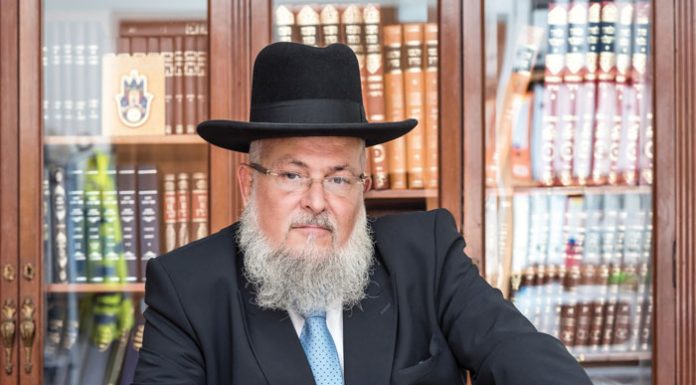When The New York Times recently ran a series of disparaging articles about New York’s Orthodox Jewish community and its yeshivah system, it seemed to have incredibly fortuitous timing, with the first article in the series coming out the day before a meeting at which the Regents Board would be voting on the role of government in regulating yeshivos. However, according to a newly released tranche of emails, that was no coincidence; the Times was actually colluding with the New York State Education Department as it was writing the series.
That fact was recently revealed in an article by the politics editor at Breitbart, Emma-Jo Morris, who walked through several email exchanges between The New York Times’ reporters and state government representatives. (Ami has obtained the full tranche of emails upon which Breitbart based its reporting—all 862 pages.)
If you think you might have heard of Emma-Jo before, you probably have. She recently testified in Congress before the Select Subcommittee on the Weaponization of the Federal Government about her time working at the New York Post on the Hunter Biden laptop story, and how it was suppressed because of collusion between government, traditional news outlets and social media sites like Twitter. As in the yeshivah case, Emma-Jo showed that too-close relationships between news outlets and government meant that an important news story—one about government corruption in the case of the laptop—was twisted to fit the facts as desired by the powers that be.
Tell me about your involvement in the ongoing saga of The New York Times versus the yeshivos.
In order to explain, I’ll give you some of my background. Your magazine quoted some of my pieces on Hunter Biden’s “laptop from hell.” I broke that story while I was working for The New York Post. Since then, I’ve moved over to Breitbart. I’m a Jew from Montreal, but I didn’t go to a Jewish religious school. I actually went to a Protestant private girls’ school.
How did you end up there?
Ironically, my parents wanted me to have a classical education, so they sent me to a non-Jewish school. It wasn’t very religious or even super Christian, but it was definitely not Jewish. I don’t have any experience with yeshivos or seminaries, but I did grow up traditional and I feel strongly about my own Judaism. I also feel very connected to the Jewish community. I feel like it’s family.
So you didn’t get involved in The New York Times’ story because of any religious inclination.
I’m not a practicing Jew, but I have a soul. I initially got involved because I knew the Jewish community, and the story that Eliza Shapiro published last October didn’t match what I knew. The main charge that she was making—which she later repeated in article after article under various headlines—was essentially that this tradition is abusive. When I read that, my first reaction was to be appalled, and my second reaction was to be offended both on behalf of the Jewish community and as a journalist. As someone who knows religious and chasidic Jews and is familiar with their way of life, I read how she was talking about them as if they’re idiots, and I knew for a fact that it wasn’t true. Not only wasn’t it true but it was a disgusting slander. As a journalist, I found myself thinking, This person is a straight-up liar.
You knew it wasn’t true, but you didn’t have any evidence.
I didn’t have anything concrete to go on at that point, other than looking at it critically and knowing that it didn’t correspond with reality. What the Times was painting these people out to be—and I hate to say it—was child abusers. Anyone who has ever spent a minute with a frum Jew knows that this is the most egregious and also obviously fake thing to allege about someone. You don’t have to be a genius, nor do you need to read the 900 emails that went back and forth between the Education Department and The New York Times, or even know about the sources they deliberately left out of their reportage to know that what they were saying just wasn’t true.
They also portrayed us as though we are miserable, unhappy people who are being forced into a way of life not of our own choosing.
Yes, as though the community is full of slaves, depravity and deprivation. Occasionally there were blatant charges of abuse, but this was the recurring theme. I didn’t know what their game was, but I knew there was a game. So I posted about it on Twitter. I have a pretty intense Twitter following, and I was knocking both Eliza Shapiro and her story. I wrote that it was a disgusting political hit job from a secular, liberal Jew who was offended by a community that is the living embodiment of traditional Judaism. She obviously had some beef with that.
To read more, subscribe to Ami





















